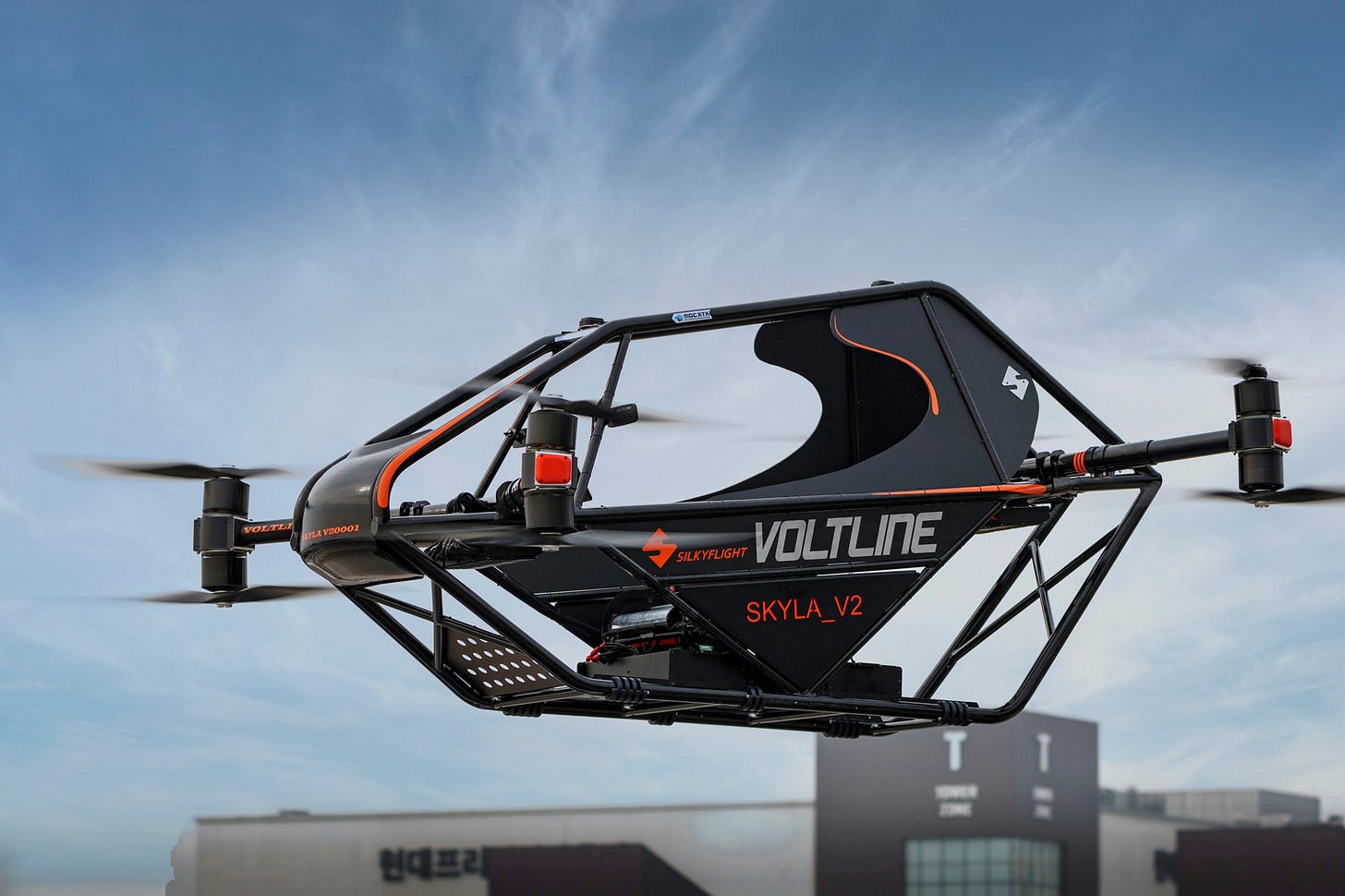There are a bunch of these personal size open cockpit eVTOLs coming out - they remind me of 4-wheel ATV’s but with blades instead. They are meant for cruising around and having fun, and possibly could serve to aid rescue missions in hard to reach places. Jetson Aero is also fits into this category.
Enter the Skyla V2 by Voltline. A single-passenger eVTOL multicopter production aircraft that offers the flexibility of manual, autopilot, or remote control operation. With a cruising speed ranging from 60 to 90 kilometers per hour (37 to 56 miles per hour), this aircraft provides a captivating 20-minute flight duration. It boasts an empty weight of 150 kilograms (330 pounds), a maximum payload capacity of 150 kilograms (330 pounds), and a maximum takeoff weight of 300 kilograms (660 pounds).
Established in 2006 and headquartered in Gunpo, Gyeonggi Province, South Korea, Voltline specializes in the creation of electric vertical takeoff and landing (eVTOL) aircraft for advanced air mobility (AAM). Currently, they are actively seeking investors to join in on the air car action.
The multicopter features eight propellers and eight electric motors, distributed across four booms - decent redundancy. Each boom is equipped with two stacked propellers, creating an efficient and stable flight system. Powering the Skyla V2 are lithium polymer (fire warning) batteries, ensuring a reliable power source for each flight.
The aircraft's fuselage is constructed with a combination of aluminum, fiber-reinforced plastic, and carbon fiber composite materials, providing strength and durability. Upon landing, the aircraft rests on the lower frame of its fuselage, completing each flight a little bounce n’ tilt.
Flown successfully over 100 times by remote and by pilots, the V2 will be put into production this year, supposedly (year’s almost over so they better get going).
The nice thing about this category of flying cars or eVTOLs if you want to call them - is that they are a great entry level place for more affordable vehicles and recreational use. Are they dangerous? We won’t really know until at least one of them is released into mass production (Jetson seems to be leading the pack here) but I’ll be very interested to see how it goes, and possibly do a test drive in one at some point.
Sorry no website link yet.




